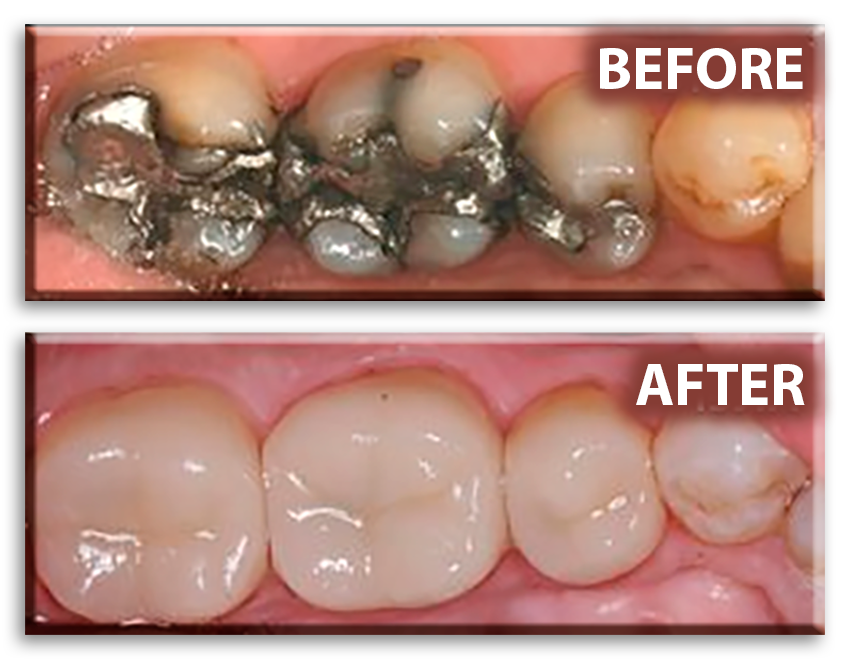What is a Dental Crown and When Do I Need One?
Everything you need to know about this simple procedure for protecting your teeth
Crowns aren’t only used for adding character to a Halloween costume—they’re also a big part of dentistry and a huge asset for your teeth! In this blog, we’re tackling the topic of ‘crowns’ and explaining everything you need to know about this tooth-saving procedure.
What Is A Dental Crown?
Like a hat for your tooth, dental crowns are tooth-shaped caps that are used to cover and protect damaged teeth. Crowns are commonplace when fillings no longer get the job done. Made out of a variety of materials, crowns restore the shape, size, strength, and appearance of your tooth and is cemented into place by simple procedure.
When Do I Need One?
Crowns are a great tool for your teeth and can be used in many different situations including:
Protecting teeth that may be weak and/or cracked.
Restoring broken teeth or significantly worn down teeth
Covering and supporting teeth with large fillings
Holding dental bridges in place
Covering misshapen or severely discolored teeth
Covering dental implants
Protecting teeth that have been treated by root canal
There are many situations when either a permanent or temporary crown is necessary. It’s important to talk with your dentist regarding the right course of action for any tooth in question.
Choosing the Right Crown for You
When it comes to crowns, there are many options to choose from in terms of the materials used. Factors such as location, gum tissue positioning, tooth function, and color are all factors that your dentist will consider before a style of crown is chosen.
A chart comparing dental crown materials.
Your dentist may also suggest an onlay or ¾ crown depending on the damage of the underlying tooth. While traditional crowns cover the entirety of a tooth, onlays and ¾ crowns are a more conservative approach that does not cover the full tooth. This style of crown is often used when your tooth still has a solid structure or foundation and does not require complete coverage.
The Procedure: A Step-by-Step Guide for Getting a Dental Crown
When the time comes for your crown to be made and placed, a few steps are necessary depending on the method of crown you choose.
First, you will be examined and prepared before x-rays of your tooth and surrounding bone are taken.
Depending on the state of the tooth, a root canal may be required if there is decay, risk of infection, or injury to the soft tissue inside the tooth containing blood vessels, nerves, and connective tissue referred to as ‘pulp’.
Tooth that is receiving the crown will be filed down across top and sides to make room for the new crown. Amount of tooth that is removed depends on the kind of crown chosen.
If a significant amount of the tooth in question is missing because of damage or decay, filling material may be required to ‘build-up’ the structure so the crown can cover it properly.
Once the tooth has been reshaped, an impression of your teeth will be taken using a paste or putty. This is to ensure that the crown will fit and not affect your bite.
Depending on if you choose a same-day crown or one that must be sent away to a lab, this step differs.
Same-day crowns will use a scanning device to take digital pictures of the tooth and design a crown. This design is sent to another machine that carves the crown out of the material. Within 15 minutes, crown is finished and ready to be placed.
Crowns that require lab send-off will return final crown within 2-3 weeks. While you wait for the crown to come in, you will be fitted with a temporary crown and at your next appointment, the procedure will be finished.
Protecting Your Teeth
With proper care and good dental hygiene, a dental crown can last anywhere from 5 to 15 years. Once a crown has been successfully placed, issues such as discomfort or sensitivity are common and easily fixed. Other issues such as chipping, loosening, or even falling off can develop over time and will need to be addressed sooner rather than later to prevent further damage.
If you’re in need of a crown but are worried about the cost, Alexandria Smiles offers many payment options including a Dental Savings Plan designed to provide you with access to affordable quality dental care. For more details regarding payment options, please contact us.
We look forward to seeing your smile at your next appointment!
Here are three other articles you might enjoy.
I’m Dreaming of a White…Smile!
Treat yourself to a brighter smile with our in-office whitening!
Tooth Sensitivity and Gum Disease
The common thread between these two seemingly different health concerns.
Struggling to get a good night’s rest? You might be suffering from Sleep Apnea!







